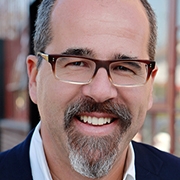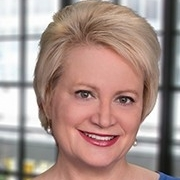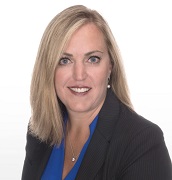The implications of Amazon’s deal to buy One Medical: What healthcare providers should know
- Amazon’s announced purchase of One Medical for nearly $4 billion should spur providers to fortify their primary care strategies.
- Although Amazon is a colossus across multiple industries and One Medical has rapidly grown as a primary care provider, there are questions about the combined entity’s ability to succeed as envisioned.
- Telehealth and digital health will be key areas for providers to consider in response to the deal.
The transformative impact of Amazon’s announced $3.9 billion acquisition of One Medical is uncertain, but healthcare stakeholders should be aware of the potential consequences.
The all-cash deal, which still must secure approval from federal regulators and One Medical’s shareholders, could hasten the evolution of primary care to a model that’s more mobile, digital and accessible.
When it was announced July 21, the transaction “likely had every hospital CEO waking up and saying, ‘Is my primary care strategy solid?’” Nicole Bengtson, managing director with Huron and leader of the company’s care transformation team, said in an interview.
“Obviously, One Medical is in some key markets. Hospitals will need to lock up primary care providers and almost go to Amazon as a block to provide local services. If not, there absolutely is an opportunity that One Medical [will be] placed in their markets, and they potentially could lose market share.”
But Francois de Brantes, MBA, senior vice president with Signify Health, said the Amazon-One Medical combination has much to prove before it can create significant upheaval for legacy providers.
“The jury is out on whether they’ll create that true value proposition for employers that shows that they can moderate [cost] trend rates,” de Brantes said July 29 during a discussion at the National Primary Care Transformation Summit. “If they can do that, then everyone should be shaking in their boots.”

Francois de Brantes, Signify Health
A fast-rising primary care player
One Medical, which launched in 2007, offers both a direct-to-consumer membership model and health benefits to more than 8,000 employers, among them Google. It has clinics in 12 major U.S. markets and provides 24/7 access to virtual care.
Susan Dentzer, president and CEO of America’s Physician Groups, noted that One Medical went public (in early 2020) at $14 a share. The stock price has fluctuated between $6 and $30 over the last year.
“It hasn’t exactly been the roaring unicorn success story that a lot of people, probably including their investors, were hoping it would be,” Dentzer said during the National Primary Care Transformation Summit discussion. “What that tells you is that the market is very excited about these newer modalities of care, particularly the consumer focus, but it isn’t exactly burning up the pavement right now.”

Susan Dentzer, America’s Physician Groups
In 2021, One Medical purchased the value-based primary care group Iora Health for $2.1 billion. That deal gave the company a presence in the Medicare Advantage market to go with its foothold in the employer space.
That purchase aside, de Brantes said, One Medical hasn’t necessarily been laser-focused on improving the cost effectiveness of health.
“One of the ways One Medical grew is by doing deals with sometimes the most expensive academic medical centers or health systems in the local area,” he said.
“To increase the zone of value that you’re going to create for employers off a One Medical-Iora core, you’re going to have to rethink some of the relationships that exist. I think that’s going to be a challenge for Amazon initially, and they’re going to have to figure out how to scale it.”
A multi-industry behemoth
Amazon launched the Haven partnership with Berkshire Hathaway and J.P Morgan in 2018, seeking to build cost-effective innovations in healthcare access for their employees. But the initiative dissolved after three years in large part because collaborating proved more difficult than executing solutions as individual companies.
Amazon offers primary and urgent care through Amazon Care, which was rolled out to the company’s workforce in 2019 and then to other employers over the last couple of years, with clinics planned in more than 20 cities and around-the-clock telehealth access. Medications are delivered through Amazon Pharmacy.
Aug. 25 update: Amazon is shutting down Amazon Care, according to published reports, with that venture joining Haven as major healthcare initiatives that the company has discontinued. In the last week, Amazon also has emerged as a bidder for Signify Health, a value-based healthcare company that helps clients provide home-based care.
When Dentzer speaks with clinical leaders, she sometimes asks whether they think Amazon is going to take over the healthcare industry. They generally answer in the negative.
Then she asks, “Do you think Amazon is going to force everybody else to behave more like Amazon?”
“They all believe that,” she said. “It’s not just because of Amazon, it’s because of the whole consumerism focus now that conventional practices are having to move in this direction and have extended hours and weekend hours and much more virtual capacity.”
Ron Holder, chief operating officer with the Medical Group Management Association, said he’s curious to see whether Amazon builds on the acquisition by launching an insurance product. Combined with One Medical’s infrastructure, such a product could move Amazon closer to an Optum-type model.
“Those kinds of things are really going to determine how much more of the health system they’ll impact,” Holder said in an interview. “I think it’ll be unlikely that they get into the hospital game at this point.”
“I have to think they’re going to have to partner with medical groups throughout the United States to do the first-tier specialty care,” he added. “And even a lot of the in-office primary care.”

Ron Holder, Medical Group Management Association
Refined telehealth strategies become paramount
Established health systems and medical groups should view the Amazon-One Medical combination as an impetus to solidify their telehealth approach.
With Medicare coverage of telehealth services temporarily ramping up during the COVID-19 public health emergency (PHE), Holder said, practices generally have been content to overlay a telehealth strategy on their standard brick-and-mortar operations. Such a model is unlikely to be sustainable and may force providers to yield ground to an emerging competitor such as Amazon in an increasingly essential area of operations.
“You have to take action now to make sure that your cost structure for telehealth will align with a reduction in reimbursement for telehealth services after the public health emergency,” Holder said.
“Take advantage of the fact that you’re still getting paid that better money for it to experiment, to do whatever you need to do so that you can exist in a post-PHE world to compete with [Amazon]. They’re coming from the other end where they don’t have the clinics, they don’t have the hospitals, they don’t have all the expensive infrastructure. They can just [say to physicians], ‘I’m going to pay you this much to sit at your house and do this on the Internet.’
“If you’re going to be competitive, you have to make sure that your cost structure is going to be competitive with someone like this — because there is a market for it.”
Digital strategies come into focus
An intriguing aspect of the Amazon-One Medical union is the potential for advancement in healthcare data integration.
“They certainly could facilitate, for example, the transmission of medical records and the interaction and interoperability with specialty care providers,” de Brantes said.
Remote monitoring is another area where the combined organization could have an edge. Installing the infrastructure for comprehensive digital healthcare has been challenging for legacy providers, and patient costs present another barrier.
Said Holder, “Can Amazon scale it in a way [so that] more of the patients out there can do those types of things to have remote monitoring, and then figure out a way to dump that data to the practice?”
Bengtson cited chronic disease management as an area of healthcare that’s ripe for digital disruption.
“That is a space that I can see Amazon and One Medical stepping into in a meaningful way that aligns the consumer experience that they both provide in addition to some of the digital experiences,” she said.

Nicole Bengtson, Huron
To counter Amazon’s demonstrated ability to deliver seamless customer experiences, healthcare providers must leverage data to thoroughly understand patients as individuals, Bengtson added.
“The industry is moving to that long-term loyalty, that long-term longitudinal relationship,” she said. “I think where providers can win is really housing and having all of that information on a specific patient. What are their life goals? What are their social and clinical risks?
“Amazon and One Medical will also have an opportunity to have that and create it, but the providers already have it today. Continuing to maximize that will be really important.”





